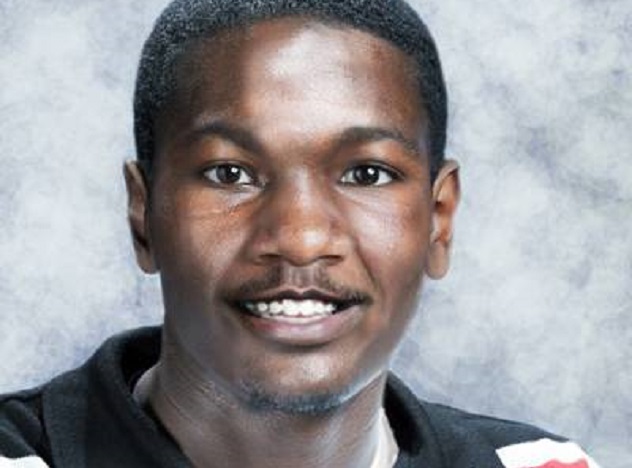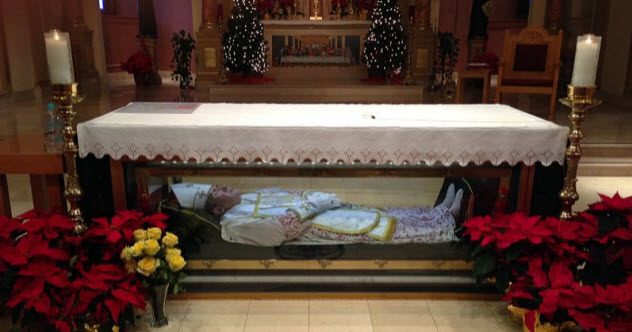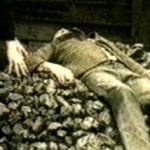 Space
Space  Space
Space  Humans
Humans 10 Unique Ancient Peoples Whose Cultural Footprints Still Shape the World
 Technology
Technology 10 Inventors Who Died Before Seeing Their Creations Succeed
 Crime
Crime 10 Shocking Crimes Where the Perpetrator Walked Free
 Creepy
Creepy 10 Representations of Death from Myth, Legend, and Folktale
 Space
Space 10 of the Weirdest Ways the Universe Works
 Weird Stuff
Weird Stuff 10 Crazy News Stories No One Expected to Read in 2025
 Crime
Crime 10 Bizarre Cases of Killer Seniors
 Technology
Technology 10 Signs That “Made in the U.S.A.” Still Lives
 Music
Music Top 10 Songs That Tell Stories Better Than Books
 Space
Space 10 Surprising Things Found or Left on the Moon
 Humans
Humans 10 Unique Ancient Peoples Whose Cultural Footprints Still Shape the World
 Technology
Technology 10 Inventors Who Died Before Seeing Their Creations Succeed
Who's Behind Listverse?

Jamie Frater
Head Editor
Jamie founded Listverse due to an insatiable desire to share fascinating, obscure, and bizarre facts. He has been a guest speaker on numerous national radio and television stations and is a five time published author.
More About Us Crime
Crime 10 Shocking Crimes Where the Perpetrator Walked Free
 Creepy
Creepy 10 Representations of Death from Myth, Legend, and Folktale
 Space
Space 10 of the Weirdest Ways the Universe Works
 Weird Stuff
Weird Stuff 10 Crazy News Stories No One Expected to Read in 2025
 Crime
Crime 10 Bizarre Cases of Killer Seniors
 Technology
Technology 10 Signs That “Made in the U.S.A.” Still Lives
 Music
Music Top 10 Songs That Tell Stories Better Than Books
10 Of The Strangest Unsolved Hospital Mysteries
There are few places in the world where a person feels more vulnerable than a hospital. Some strange, unsolved mysteries have taken place inside hospitals. While most of them are tragic, some of them may actually be considered genuine, unexplained miracles.
10 The Disappearance Of Joan Gay Croft

Whenever a natural disaster occurs, it’s almost inevitable that some victims will never be found. However, the disappearance of four-year-old Joan Gay Croft is unlike any other.
On April 9, 1947, an F5 tornado ravaged its way through Texas, Oklahoma, and Kansas, causing hundreds of deaths and devastating several towns. One of these towns was Woodward, Oklahoma, where 185 people were killed and many more injured. Joan Gay Croft lived in Woodward and wound up losing her mother that day. Joan’s stepfather was critically injured, and both Joan and her eight-year-old half sister, Jerri, suffered minor injuries. The two girls were taken to the local hospital to stay in the basement, which was being used as a shelter for refugees.
Sometime during the night, two unidentified men dressed in khaki army uniforms entered the basement and grabbed Joan. When Joan protested that she didn’t want to leave her sister, the two men assured her everything would be okay and that they would return for Jerri. Hospital staff members confronted the men, but they claimed they were taking Joan to another hospital to see her family. The two men were allowed to leave with Joan but did not return for Jerri. Joan was never seen again. Strangely, the men had specifically asked for Joan when they entered the room, indicating that they knew her.
The case received national mainstream attention over the next several decades, but Joan was never located. In 1999, a newspaper editor for The Oklahoman received an e-mail from a woman claiming to be Joan Gay Croft, who said she had been living under a different name with her family’s knowledge. The woman agreed to a meeting but ceased communications and never came forward. Joan Gay Croft’s disappearance remains unsolved and is one of the most unusual child abductions on record.
9 The Ann Arbor Hospital Murders
The summer of 1975 was a horrifying time to be a patient at the Veterans Administration Hospital in Ann Arbor, Michigan. During one six-week period, 35 patients suffered unexplained respiratory attacks, and 11 of them did not survive.
An FBI investigation was launched, uncovering evidence that most of the victims had received unauthorized injections of Pavulon, an anesthetic muscle relaxant, through their intravenous feeding tubes. Suspicion turned toward two Filipino nurses, Leonora Perez and Filipina Narciso, who both happened to be working on the shifts when these supposed injections took place.
One of the surviving victims even identified Perez, claiming she had entered his room and run off right before he suffered his respiratory attack. Even though both nurses protested their innocence and the evidence against them was circumstantial, they were indicted on 10 counts of poisoning, five counts of murder, and one count of conspiracy. They were convicted in July 1977.
However, the nurses’ trial was controversial and marred by accusations of racism. The patient who identified Perez was considered to be an unreliable, prejudiced alcoholic. At one point, he actually referred to the two defendants as “slant-eyed bitches” and claimed that there was a conspiracy among Filipino nurses to murder American veterans. As Perez and Narciso did not know each other all that well, their defenders considered it very unlikely that they would collude to murder patients together.
When a nursing supervisor committed suicide shortly before the trial, there were unconfirmed reports that she left behind a note taking responsibility for the deaths. Only seven months after the trial, the convictions were overturned on appeal due to allegations of prosecutorial misconduct. Narciso and Perez were both released and the charges against them dismissed. Officially, the murders are still unsolved.
8 The Disappearance Of Benita Chamberlin
On February 13, 1978, 24-year-old Benita Chamberlin checked into Sacred Heart General Hospital in Eugene, Oregon, to give birth to a baby girl (who is narrating the video above as an adult). However, because the infant was born five weeks premature and had a low birth weight, she had to remain in the hospital for over a week.
When Benita returned to the hospital on the morning of February 23, she was told that the child was fully recovered and would be ready to go home at approximately 1:30 PM. Benita phoned a friend to share this news, but it was the last time anyone ever heard from her. She never took her infant daughter home that day.
When Benita didn’t return home that night, her mother reported Benita missing. Shortly after, her purse was discovered in a parking lot at the University of Oregon. Later, her abandoned car was found parked at a nearby bottling factory. Benita had been seen driving her vehicle out of the hospital parking lot the previous morning, but no one knows what happened to her afterward. She left behind her newborn child and two other daughters.
Weeks later, a plastic bag containing a severed female thigh was discovered in a garbage bin. Initially believed to be connected to Benita’s disappearance, it ended up belonging to another murdered woman from the area. After nearly 40 years, there is still no trace of Benita Chamberlin.
7 The Toronto Hospital For Sick Children
Infant Deaths

From June 1980 until March 1981, Toronto’s Hospital for Sick Children went through a terrifying ordeal as their infant mortality rate spiked by over 600 percent. The first suspicious death took place on June 30, 1980, when 18-day-old Laura Woodcock died unexpectedly. Over the next nine months, around 40 infants died under suspicious circumstances.
The turning point occurred when 27-day-old Kevin Garnett passed away on March 12, 1981. After a fatal dosage of the heart-regulating drug digoxin was found in his system, an investigation was launched. By the end of the month, Nurse Susan Nelles was arrested for murder. Even though there was no hard evidence against Nelles, over 20 of the suspicious infant deaths had occurred on her shifts. The circumstantial case against Nelles completely fell apart, and the charges against her were dropped in May 1982.
Investigators continued to launch judicial inquiries into the case. On April 23, 1983, two days after a new inquiry was called, a six-month-old infant died at the Children’s Hospital. Fatal levels of digoxin were found in his system. Suspicion eventually turned toward Phyllis Trayner, another nurse on the staff. Reportedly, she had been seen injecting the IV line of one of the victims three hours before the child died in March 1981. However, Trayner also maintained her innocence, and no charges were ever filed against her.
In recent years, a new theory has surfaced that the infants were not murdered. Possibly, the traces of digoxin were actually a chemical compound called MBT, which could have leeched off the rubber seals of IV lines and plastic syringes, inadvertently causing a fatal reaction in the victims. Nonetheless, the case officially remains unsolved.
6 The Miraculous Recovery Of Owen Thomas

In many near-death experience stories, a patient is brought to a hospital with slim expectations of survival, then makes a miraculous recovery. However, few of these recoveries are more unlikely than that of 20-year-old Owen Thomas.
On December 16, 1981, Owen saw his friend being attacked on a New York street corner and intervened to help. Stabbed three times in the chest and abdomen, Owen’s heart, liver, and gallbladder were punctured. By the time anyone ran over to help, his intestines were hanging 20 centimeters (8 in) out of his stomach. Owen was rushed to Beekman Downtown Hospital. When he arrived, his body had already lost so much blood that his chances of survival seemed nonexistent.
Owen’s heart stopped beating, and he had no pulse or blood pressure by the time doctors went to work on him. Owen’s bowels had also been severed by the stabbing, so his intestines were covered in feces. Although Owen was clinically dead for over five minutes, somehow he survived several hours of surgery.
Doctors feared that the long period of oxygen deprivation would cause serious damage to Owen’s brain, but he was completely coherent when he woke up and displayed no negative aftereffects. Owen’s recovery defied all medical logic. Everyone involved thought it was a genuine miracle.
Later, Owen described a vision of entering Heaven, where he encountered his older brother, Christopher, who had died in a car crash two years earlier. According to Owen, Christopher pushed him out of Heaven. “We don’t want you,” Christopher had said before Owen woke up. Owen Thomas’s unlikely recovery remains one of the more miraculous near-death experiences on record.
5 The Disappearance Of Philistine Saintcyr

Philistine Saintcyr was a 66-year-old Haitian immigrant who lived in Immokalee, Florida, in 2006. On April 26 of that year, Philistine suffered a medical emergency. He was airlifted to NCH North Naples Hospital over 65 kilometers (40 mi) away, where he was treated for high blood pressure.
By the following morning, Philistine had made a full recovery and was discharged from the hospital. The staff provided Philistine with a voucher for a cab ride home. The taxi made the 65-kilometer journey from Naples to Immokalee. But Philistine did not speak English, so he was unable to give the driver his home address. As a result, the driver was forced to take Philistine back to the hospital.
The staff then provided Philistine with instructions for how to take the bus home to Immokalee. They directed him toward a nearby bus stop, although no one knows if he ever boarded a bus. After leaving the hospital, Philistine never arrived home and was not seen again.
In addition to not speaking English, Philistine might have suffered from undiagnosed dementia at the time of his disappearance. He may have legitimately forgotten his address while he was with the cab driver or when he went to the bus stop. Possibly, Philistine became disoriented and wandered off, but there has been no trace of him in nine years.
4 The Murders Of Patricia Matix & Joyce McFadden
On December 30, 1983, Patricia Matix and Joyce McFadden, a pair of research assistants in their thirties, were working together in the cancer research laboratory at Riverside Hospital in Columbus, Ohio. When their supervisor stopped by the lab that day, he was shocked to discover Joyce’s body on the floor. While hog-tied and gagged, she had been stabbed 19 times and had her throat slashed.
After police were notified, Patricia’s body was found inside a nearby cold room. Also bound and gagged, she had 16 stab wounds and a slit throat. Both women’s wedding rings were missing.
Three months after the murders, Patricia’s husband, William Matix, became a person of interest after collecting a $350,000 insurance policy on his wife’s death and moving to Florida. On Christmas Eve 1984, the case took a surprising turn when a Miami woman named Regina Platt was found dead in her home with a shotgun blast to the head. The death was ruled a suicide, but suspicion eventually fell on Regina’s husband, Michael, especially once it was discovered that the Platts had close ties with William Matix.
A theory emerged that William Matix and Michael Platt might have agreed to a secret pact to murder each other’s wives. Over the next year, the two men committed a series of bank and armored-car robberies. On April 11, 1986, both were killed in a violent shoot-out with the FBI after taking the lives of two agents.
While they remain the prime suspects, no definitive evidence has ever been found to tie either man to the Riverside Hospital murders.
3 The ‘Dr. X’ Killings

In December 1965, an elderly man named Carl Rohrbeck was admitted to Riverdell Hospital in Oradell, New Jersey, for hernia surgery. His surgeon, Dr. Mario Jascalevich, made an inexplicable, last-minute decision to cancel the surgery, and Rohrbeck died shortly thereafter. Over the next 10 months, eight more patients suffered suspicious, unexplained deaths after being admitted to Riverdell for seemingly routine surgery.
In October 1966, empty bottles of tubocurarine, an anesthetic muscle relaxant, were discovered inside Dr. Jascalevich’s locker. As Jascalevich was on duty when all nine victims died, he was suspected of injecting them with fatal doses of the drug.
Jascalevich denied these allegations, claiming that he had been using the tubocurarine to perform experiments on dying dogs. After an internal investigation, Jascalevich quietly resigned from the hospital.
Years later, Myron Farber, a New York Times reporter, received an anonymous letter about the suspicious deaths at Riverdell Hospital. Farber conducted a thorough investigation into the case and published several articles about his findings. He protected Jascalevich’s identity by simply referring to him as “Dr. X.”
The articles prompted an exhumation of five of the Riverdell victims. When traces of tubocurarine were found in three of the bodies, Dr. Jascalevich was charged with five counts of murder. As other doctors from Riverdell had performed surgery on the victims before their untimely deaths, it was theorized that Jascalevich committed the murders to sabotage his colleagues’ careers.
However, due to lack of evidence, two of the murder charges against Jascalevich were dismissed. In 1978, he was acquitted of the other three murders at trial. The man known as “Dr. X” returned to his native Argentina and died six years later.
2 The Disappearance Of Tavish Sutton

Tavish Sutton was only one month old when he was admitted to Atlanta’s Grady Memorial Hospital on March 6, 1993. The child underwent minor surgery to remove an abscess from his body, and the procedure was successful. At the time, Tavish was officially in the care of the Department of Family and Children Services because his mother suffered from schizophrenia and was being treated in a mental institution.
Three days after his admittance, while recovering from his surgery in the hospital’s pediatric ward, Tavish inexplicably vanished without a trace. A nurse had checked on him in the ward early that morning. But when she returned 15 minutes later, Tavish was gone.
Tavish’s mother filed a lawsuit against the hospital for allowing her child to be abducted, and they eventually reached a $600,000 settlement the following year. Neither Tavish’s mother nor anyone from her family is considered a suspect in his disappearance.
Investigators never found any solid suspects, but rumors did circulate about an unidentified woman who lived near the hospital and reportedly liked to pretend she was pregnant. One theory is that this woman sneaked into the hospital and abducted Tavish from the pediatric ward to raise the child as her own. (An age-progressed picture of what he might look like at 17 is shown above.) However, no evidence has ever turned up to support this theory.
After 22 years, Tavish Sutton’s fate remains unknown.
1 The Miraculous Recovery Of Chucky McGivern

In December 1982, seven-year-old Chucky McGivern was admitted to the Children’s Hospital of Philadelphia and diagnosed with a rare disease called “Reye’s syndrome,” which attacked his brain, liver, and nervous system. Chucky soon went into a coma, and his family was told he only had a 10 percent chance of survival.
Hoping for a miracle, Chucky’s mother pinned a medal to his bed featuring the likeness of St. John Neumann, a noted religious figure who became the Bishop of Philadelphia during the mid-19th century and was eventually canonized by Pope Paul VI. For whatever reason, the presence of this medal seemed to pave the way for a series of miraculous events.
The medal containing St. John’s likeness had been threaded to a safety pin alongside two other medals. But on numerous occasions when Chucky’s mother returned to the room, she discovered that the medal had been unthreaded and turned face down.
Things got even stranger when a picture of St. John was found taped to the wall. No one from Chucky’s family or the hospital staff admitted to doing these things. An unidentified boy also kept showing up in the ward, entering Chucky’s room, and interacting with his family. Whenever security was called, they couldn’t find this boy. No one ever saw him entering the hospital, either.
Four days after falling into his coma, Chucky suddenly woke up and made a miraculous, unlikely recovery. He described a dream in which he saw this same, mysterious boy standing over him. After Chucky was discharged from the hospital, his family made a trip to the Shrine of St. John Neumann (pictured above) and saw a painting of St. John when he was 12 years old. He looked exactly like the mysterious boy everyone had seen at the hospital.
Robin Warder is a budding Canadian screenwriter who has used his encyclopedic movie knowledge to publish numerous articles at Cracked.com. He is also the co-owner of a pop culture website called The Back Row and recently worked on a sci-fi short film called Jet Ranger of Another Tomorrow. Feel free to contact him here.








